STORE DISPLAY, (claimed to be from) a SHOP in MAIN STREET of GOOLWA SOUTH AUSTRALIA, 1913
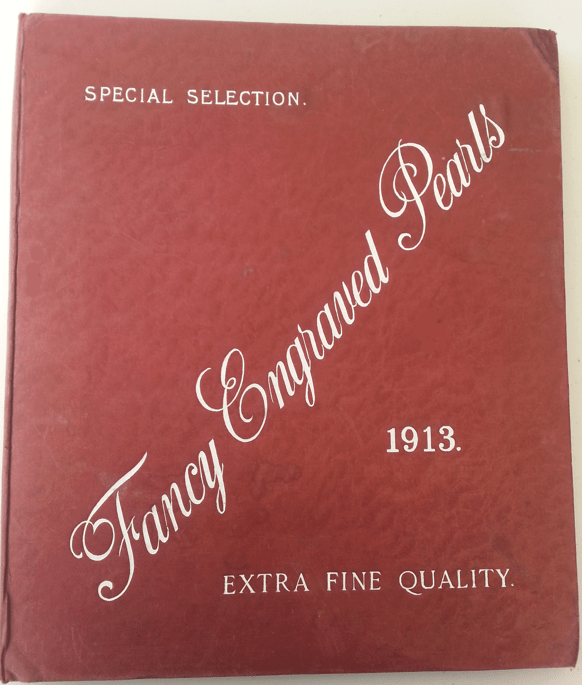
The buttons displayed vary from 6.3 up to 30.9 mm in diametre. Most are 2 and 4 holes sew-throughs; a few are small self-shanked.
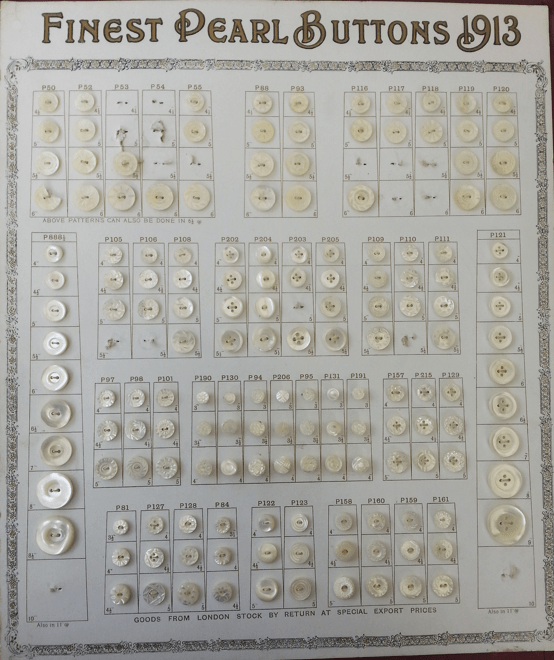
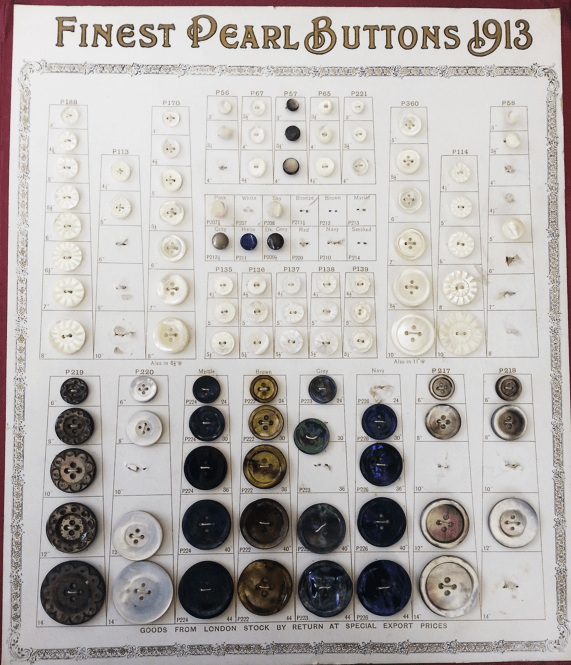
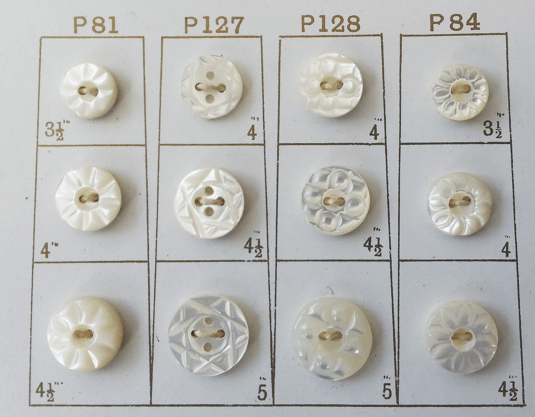

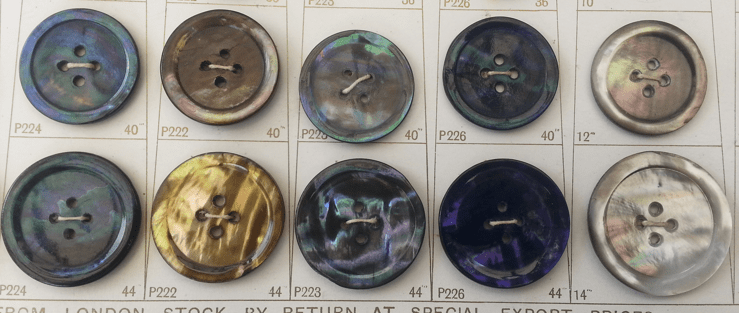
When ‘mother of pearl’ was used in the 17th and 18th century, only white was fashionable. The best quality came from Broome, Darwin and Thursday Island. Ironically, the white examples above (at least) would probably have been made from shell shipped from Australia to Birmingham, made into buttons, transported to distributors in London, then shipped back to Australia. The so called ‘black’, or ‘smoked’ shell was not used until the end of that century. Above, it can be seen both natural and tinted. This type of shell was mainly harvested from the Society Islands, with that from the Cook Islands producing a similar, but grayer shell. Other shades were harvested elsewhere.
Goolwa
Goolwa is an historic port town near the mouth of the Murray River, connecting river trade with sea trade. There is no “Main Street” in Goolwa, nor a “haberdashery store” per se, but this advert from 1916 suggests an answer, as it mentions ‘main street’, and also Goolwa.

Blyth Agriculturist (SA), 20th October 1916 page 4.
Paterson Brothers, drapers in Norwood, first advertised in 1901.
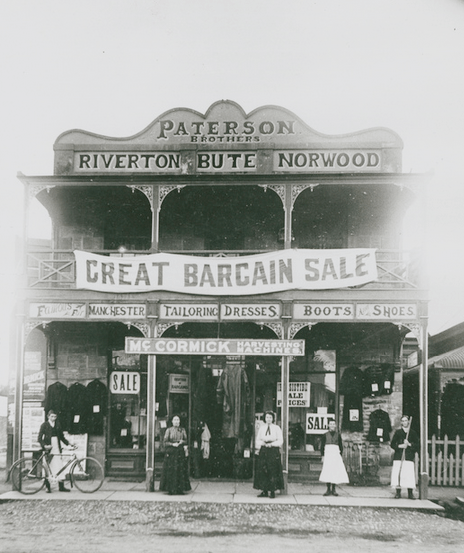
State Library Australia #B 16946. c.1900 at Riverton.
